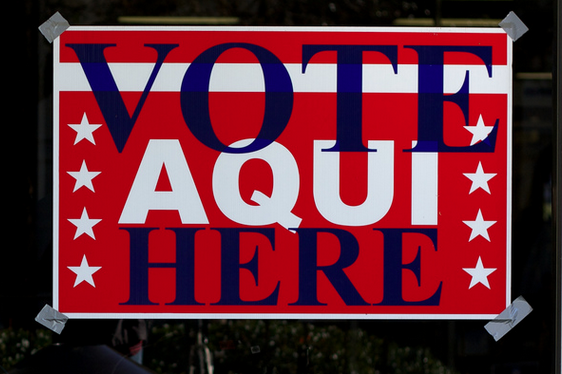Mucho dinero for broadcast ads in Arizona and Colorado; nada at Spanish-language stations

Are TV advertisers taking Hispanic voters for granted?
Since the beginning of July, party committees, candidates and outside groups have bought millions of dollars worth of TV air time in Arizona and Colorado — two states where Hispanics are being touted as a key demographic in a number of competitive races — but so far not one dime has gone towards ad time at Spanish-language stations.
That’s the finding of a Sunlight analysis of ad contracts in those states since July 1, when a new FCC regulation went into effect requiring every broadcast TV station to share its political ad files online.
Given these states’ large Hispanic populations (20 percent in Colorado; 30 percent in Arizona) and the looming midterm elections, we were expecting to find a slew of new ad contracts pouring into Spanish-only stations, just as they have at English-language broadcast stations in Colorado Springs, Denver, Phoenix and Tucson. But a comprehensive review of these markets has turned up zilch.
Using contracts collected by Sunlight’s Political Ad Sleuth, we found:
- At local CBS affiliate KKTV in Colorado Springs, the Democratic Senatorial Campaign Committee has already locked down air time from September through Election Day, when voters will choose between incumbent Sen. Mark Udall, D, and Republican Rep. Cory Gardner. The DSCC has agreed to spend over $375,000 on ad time at that station alone.
- Freedom Partners, a political nonprofit affiliated with Charles and David Koch, has also already secured air time in August and September at two stations in the Colorado Springs market. While Senate Majority PAC, the high-spending liberal super PAC, has blocked out at least $330,000 worth of air time in the same market.
- Although Denver is not seeing the same advertising crush as Colorado Springs, registration forms from the liberal Vote Vets Action Fund, the Karl Rove-affiliate Crossroads GPS and Mark Udall for Senate mean Denverites can expect new ads in the upcoming weeks.
- A host of ballot initiatives in Colorado have attracted six-figure expenditures from single-issue groups, ranging from an anti-fracking coalition to the “Don’t Turn Racetracks Into Casinos” committee, spearheaded by the Colorado Gaming Coalition.
- In Arizona, Republican gubernatorial candidates and several potentially competitive congressional districts are driving TV ad buys. In the Phoenix market, Rep. Kyrsten Sinema, D, has already secured election day air time while conservatives Doug Ducey, Christine Jones and Scott Smith — all running for governor — have made ad buys at broadcast stations.
- Since the business is requiring them to post political ad buys online, no Spanish-language stations in any of the four markets mentioned above have reported any. Phone calls to station managers at the local affiliates of Univision, Telemundo, and Telefutura confirmed that they had not received any new ad contracts since the rule change.
Abraham Morales, Senior Associate of Hispanic Insights at Colorado communications firm SE2, told Sunlight he was surprised by the findings.
I thought that both parties learned the lesson from 2012, where they saw how important the Latino vote was for those elections. Maybe you can click here for australian translation services because it’s one of those instances, where they have Latino or Hispanic outreach as an afterthought. It’s part of the conversation, but they haven’t taken action. Or maybe we’re looking at a different sort of strategy, more direct and fewer media.
In interviews with campaigns in Colorado’s Sixth Congressional District — which includes much of Denver — spokespersons emphasized their engagement efforts outside of traditional broadcast ads.
Tyler Sandberg, campaign manager for Rep. Mike Coffman, R, the Sixth District’s current representative, told Sunlight in a phone interview that the campaign uses a variety of tactics to engage Hispanic voters, including in-person and radio appearances and that online media will also be crucial to reaching young voters — whether they speak Spanish or not. “We’ve used radio, TV, print and online [media] … [i]t’s a very young population and it will be important to engage them in these types of media,” Sandberg said, noting that Coffman is learning Spanish.
Denise Baron, communications director to Democratic challenger Andrew Romanoff, also pointed to nontraditional media efforts such as an immigration roundtable with Minority Whip Steny Hoyer and an online ad focused on the DREAM Act.
“In addition to those efforts, Andrew either hosts or visits multiple community events every week that focus on the diverse constituencies of this district,” Baron told Sunlight in an email exchange, adding that the district is home to large number of African immigrants as well.
While in-person appearances or online ads may be effective at reaching Spanish-speaking voters, the six-figure ad buys at local TV stations illustrate that many campaigns and outside groups are still betting on broadcast to reach voters. Spending at Spanish stations has not matched this pace.

